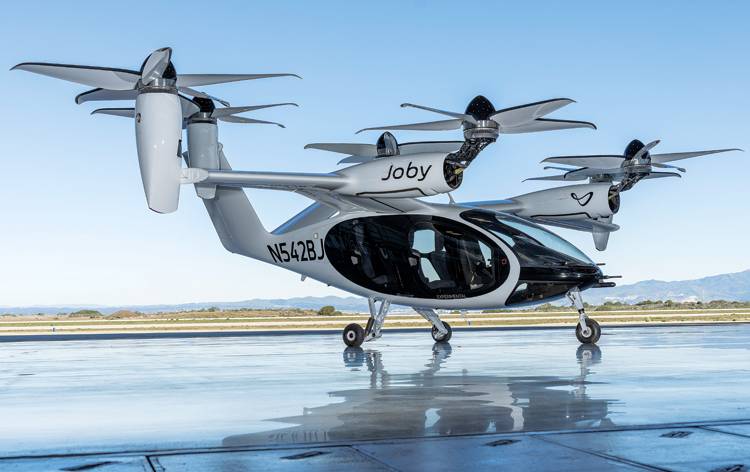Joby Aviation’s revolutionary electric vertical takeoff and landing (eVTOL) aircraft has become the focal point of collaborative efforts between NASA and the U.S. Air Force, as they seek to explore both civilian and military applications. This collaboration represents an extension of NASA’s ongoing Advanced Air Mobility research and aims to reshape the landscape of future air transportation.
In a significant development, Joby Aviation recently announced the delivery of one of their eVTOL air taxis to the U.S. Air Force AFWERX Agility Prime program through a contracted agreement. NASA has forged an interagency partnership with AFWERX, utilizing the aircraft for testing purposes that primarily revolve around integrating such vehicles into the national airspace.
“This collaboration between NASA and AFWERX is a pivotal step in advancing the field of Advanced Air Mobility,” remarked Parimal Kopardekar, integration manager for NASA’s Advanced Air Mobility (AAM) mission. “It brings together top talent and cutting-edge resources to expedite the evolution of this industry.”
Commencing in 2024, NASA pilots and researchers will embark on a comprehensive testing program for the Joby aircraft. The focus will be on evaluating air traffic management, flight procedures, and ground-based infrastructure, leveraging NASA’s skilled pilots and specialized equipment, such as the NASA Mobile Operating Facility, a mobile research laboratory.
NASA’s Extensive AAM Endeavors NASA’s involvement in Advanced Air Mobility (AAM) research has paved the way for this collaboration. Through its AAM research initiatives, NASA is constructing a blueprint for the seamless integration of future air transportation systems.
Air taxis and drones, which fall under the AAM umbrella, hold significant promise for emergency response, wildfire management, and medical supply delivery, promising to enhance community connectivity and accessibility. NASA’s overarching goal is to advance technologies that will propel the entire air taxi and drone industry forward, with insights shared with the Federal Aviation Administration (FAA) to inform future policies. The research conducted with Joby’s aircraft will further enrich the extensive knowledge base already contributed by NASA’s Aeronautics Research Mission Directorate for the industry and the FAA.
This collaboration builds upon prior efforts between NASA and Joby under a non-reimbursable Space Act Agreement, which centered on aircraft noise studies and encompassed a series of flight test simulations in Joby’s advanced simulator, as well as real-world flight testing.
Joby’s association with NASA dates back to its early stages of technological development when it received support as one of NASA’s Small Business Innovation Research (SBIR) recipients, playing a vital role in jumpstarting innovative technologies and bolstering the U.S. economy.
Military Applications and Outlook On the military front, the AFWERX Agility Prime program assumes the lead in exploring potential defense applications of these groundbreaking aircraft. The initial delivery of Joby’s air taxi to Edwards Air Force Base in California marks the commencement of a comprehensive flight test campaign, spearheaded by the Emerging Technologies Integrated Test Force within the 412th Test Wing. Furthermore, the strategic proximity of NASA’s Armstrong Flight Research Center at Edwards augments the location’s significance for extensive flight research. This delivery to Edwards signifies the start of a series, with multiple Joby aircraft slated for testing at various U.S. military bases in the foreseeable future.
Topics #Air Force #Aircraft #Joby's Electric Vertical #landing #NASA #takeoff




